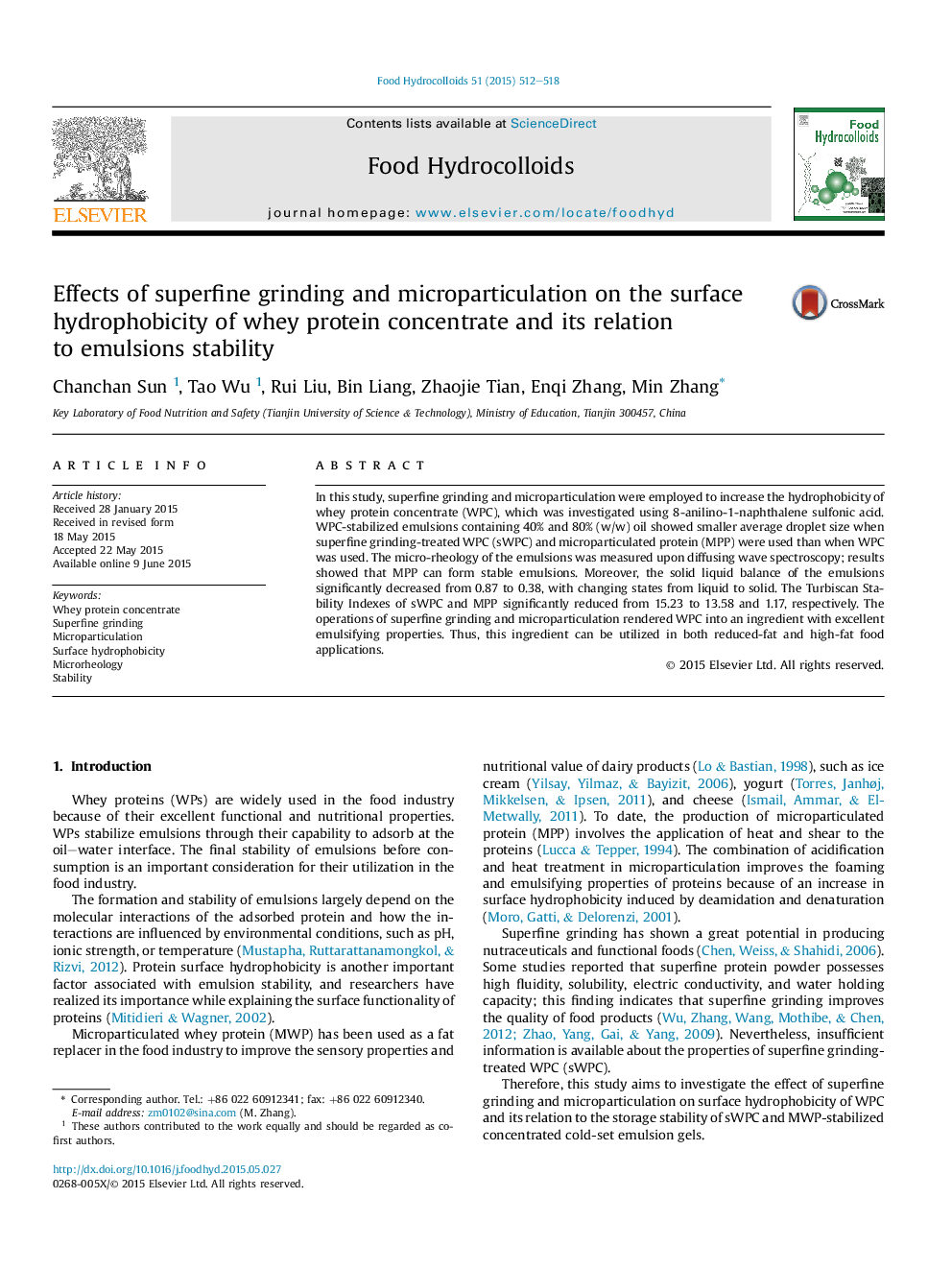| Article ID | Journal | Published Year | Pages | File Type |
|---|---|---|---|---|
| 604169 | Food Hydrocolloids | 2015 | 7 Pages |
•Superfine grinding and micropaticulated WPC-80 emulsions were firstly investigated.•Measurements of micro-rheology is based on Diffusing Wave Spectroscopy.•Emulsion stability was monitored by a Turbiscan ASG, for kinetic stability studies.•Superfine-ground improve ability to adsorb at oil–water interface.•Micropaticulation improve ability to adsorb at oil–water interface.
In this study, superfine grinding and microparticulation were employed to increase the hydrophobicity of whey protein concentrate (WPC), which was investigated using 8-anilino-1-naphthalene sulfonic acid. WPC-stabilized emulsions containing 40% and 80% (w/w) oil showed smaller average droplet size when superfine grinding-treated WPC (sWPC) and microparticulated protein (MPP) were used than when WPC was used. The micro-rheology of the emulsions was measured upon diffusing wave spectroscopy; results showed that MPP can form stable emulsions. Moreover, the solid liquid balance of the emulsions significantly decreased from 0.87 to 0.38, with changing states from liquid to solid. The Turbiscan Stability Indexes of sWPC and MPP significantly reduced from 15.23 to 13.58 and 1.17, respectively. The operations of superfine grinding and microparticulation rendered WPC into an ingredient with excellent emulsifying properties. Thus, this ingredient can be utilized in both reduced-fat and high-fat food applications.
Graphical abstractFigure optionsDownload full-size imageDownload as PowerPoint slide
